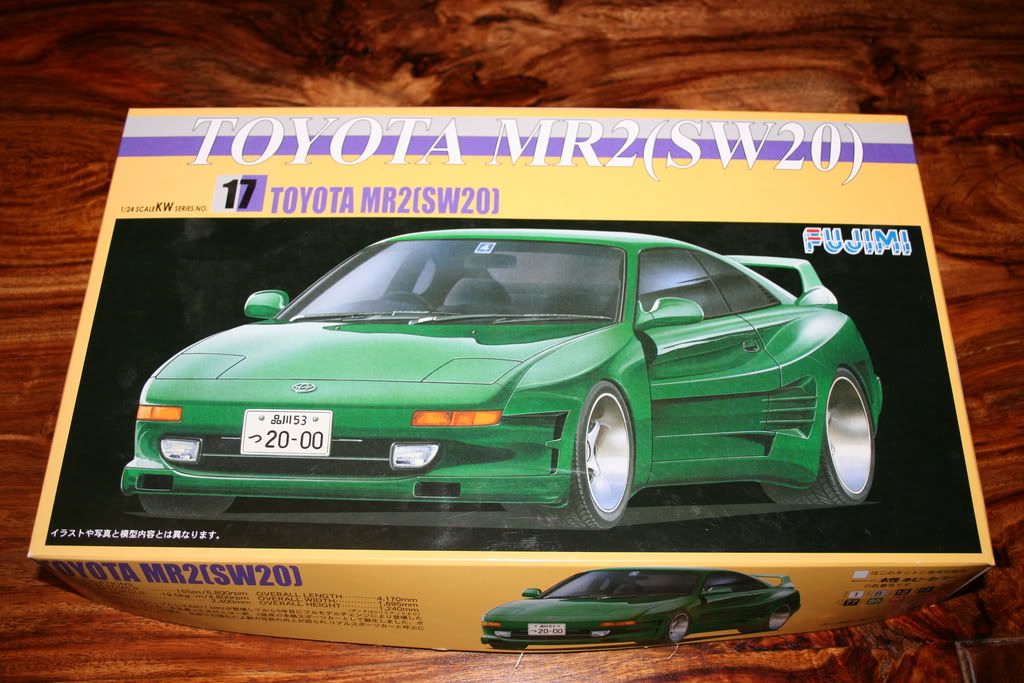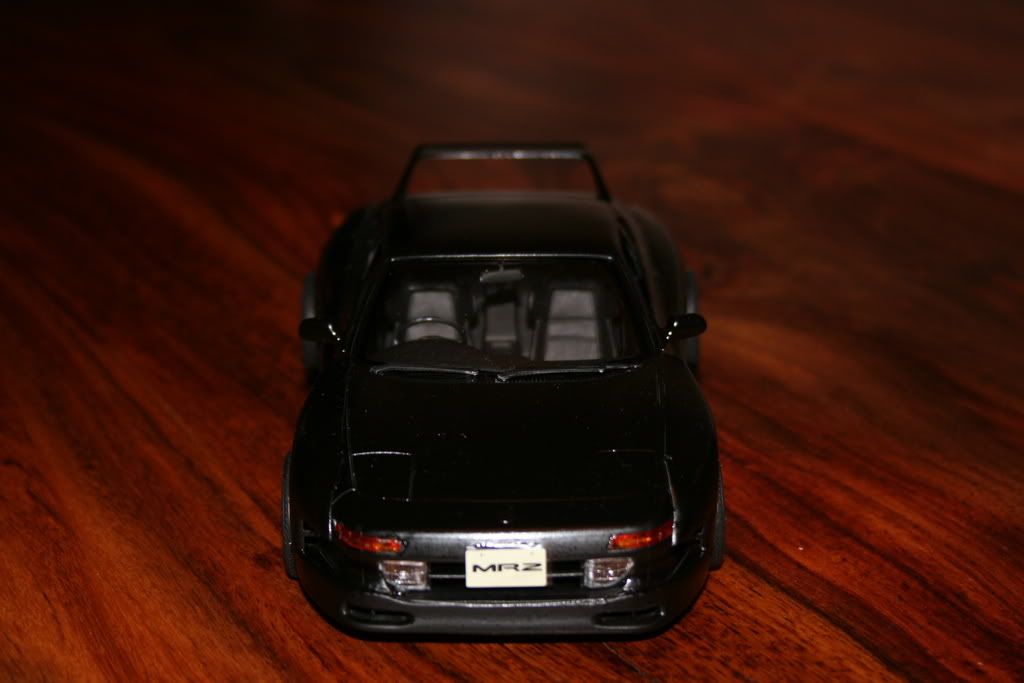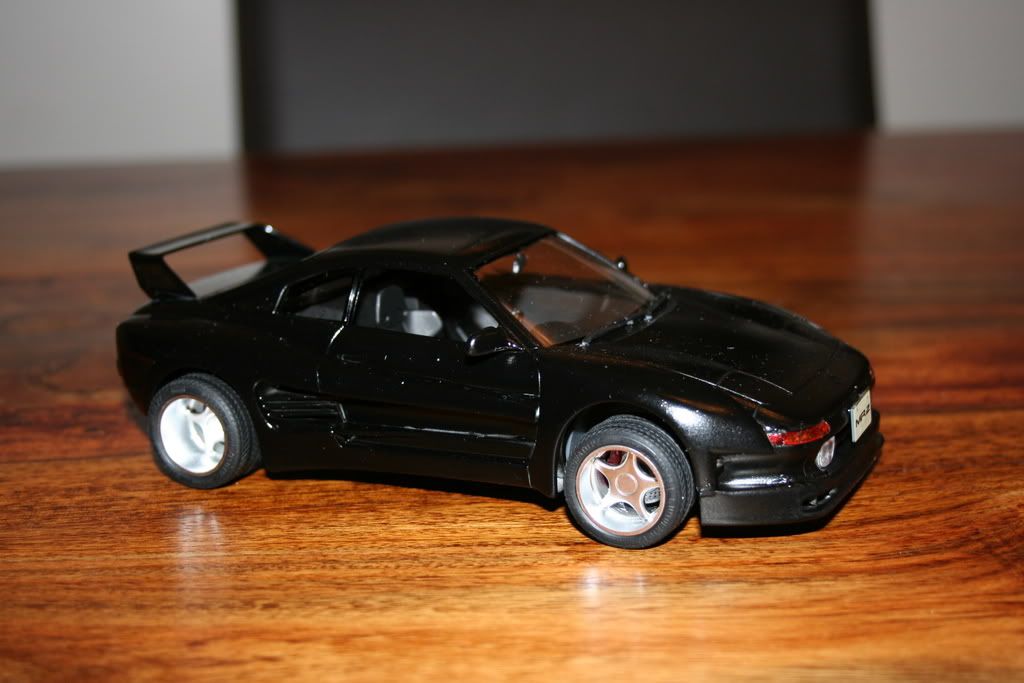
monkeyra wrote:When will the regs be released?

Would be nice to know what's allowed and not allowed, as I'm sure I'm not the only one who's tempted to convert their trackday car




I can give you a flavour of the regulations at the moment, I need a couple of weeks before I have a working set that I'm happy to publish.

An awful lot of thought and effort has already gone into this series but I need to bring everything together, finalise it and have it checked by the Race Tech Committee.


 MR2 Super GT Race Series
MR2 Super GT Race Series 


Overview


The MR2 Championship was originally envisioned as an affordable racing series that was accessible to both novice and experienced drivers.

As such, the choice of vehicle is restricted to the base specification naturally aspirated model of each of the three MR2 versions and the regulations tightly controlled to keep modifications to a minimum.

Emphasis has been firmly placed on driver skill and development.

Since it's inception, the MR2 series has grown annually and now boasts regular capacity grids.



Whilst the MR2 Championship has met it's goal of becoming an affordable entry level racing series, there is no obvious logical progression offered for those drivers that want to move on to the next level of performance and modification without completely moving away from Toyota manufactured cars.

However within the MR2 model line-up the potential exists to introduce a further class of higher performance race cars at a price point below that of other comparable series.

Both mk1 and mk2 MR2s were available in Japan with forced induction options

(supercharged and turbocharged respectively) with grey imports readily available in the UK market

- often for little more than their naturally aspirated equivalent.

The mk3 MR2 was not offered with a forced induction option but shares it's running gear with the Lotus Elise, making the more powerful Toyota engine found in the Elise, Exige and 2-Eleven a popular and common aftermarket conversion.

Toyota vehicles generally enjoy a large commonality and compatibility of parts giving further cost effective upgrade options including larger capacity V6 motors.



Standard MR2 Championship classes have very rigid regulations and the intention is to allow the Super GT cars as much freedom as possible.

Typically policing a series of this nature is very difficult, particularly with power modifications to turbocharged cars being very easy to implement and conceal.

To this end we are proposing to use a system of datalogging each vehicle's performance in order to extrapolate the power used at any point during the race.

Such systems are currently used in other racing series

(notably Britcar) to good effect.

Following a race, a data card can be collected from each car by a scrutineer and analysed in around thirty seconds using a laptop computer.



Rather than limiting cars on power alone with a compulsory minimum weight, we intend to run classes regulated by power to weight ratios and no minimum weight.

This potentially allows for powerful but heavy cars to compete on an even footing with less powerful, lighter cars.

Three classes are proposed with limits set at 150, 200 and 250 bhp per ton.

These limits roughly fit where we expect various levels of modification to place entrants, but may need tweaking as the series develops.



Engines must be original Toyota production items, transversely mounted and sourced from any Toyota or Lexus vehicle.

Modifications to head and block are free, but must be based on original standard parts.

Crankshaft, connecting rods, pistons, valves, camshafts and manifolds are all free.

Cylinder capacity may be increased or decreased by modifying cylinder bore and/or piston stroke.

Forced induction may be added to naturally aspirated engines.

Petrol and Diesel engines are permitted.

Toyota's Hybrid Synergy drive may also permitted

- entrants wishing to use this technology should contact the organisers prior to starting a build.

Toyota variable valve timing

(VVTi) and variable lift

(VVTLi) systems are permitted.

Ignition systems are free.



Gearboxes must be original Toyota transverse production items sourced from any Toyota or Lexus vehicle.

Gear ratios may be changed only by using existing gears from other Toyota production gearboxes.

Toyota's SMT

(sequentially operated manual transmission) is permitted.

Differentials are free but may not be electronically controlled.



Engine management systems

(ECUs) are free, provided that they do not provide any kind of traction control except launch control.

Drivers are permitted to interact with engine management systems during a race

- eg.

change turbo boost levels, switch maps etc.

Racelogic DL1 Powerloggers will be mandatory and must be mounted in a specified location.

These can be sourced from the organisers at a substantially discounted rate.


Fuel pumps, injectors, filters and tanks are free subject to meeting FIA requirements where applicable.

Whilst supplementary fuel tanks will not be required for MR2 Championship races it is envisaged that the specification of some cars will also be suitable for endurance racing, and we do not want to regulate against this possibility.



Suspension modifications will be regulated in such a way as to point competitors towards existing off-the-shelf solutions.

Remote reservoirs will not be permitted, while bump and rebound may not be separately adjustable.

Anti-roll bars and strut braces are free.

No suspension may be adjusted by the driver whilst seated.

Suspension pick-up points may not be modified.

Rose joints and rod ends are permitted.

Bushes may be rubber or plastic.

Discussions are currently taking place with a potential sponsor which may see controlled

- but heavily subsidised

- suspension.


Wheel sizes will be limited to a maximum diameter of 17", and maximum width of 10".

Tyre sizes will be dictated in part by availability from the control tyre supplier and a list will be made available for competitors to select from.



Bodywork modifications such as front splitters, canards, flat under bodies, rear wings, air scoops and diffusers will be permitted to allow improvements to both aerodynamics and aesthetics.

One of aim of the series is to promote MR2 race cars that look like race cars! All modifications will be subject to minimum and maximum dimensions defined for each of the three permitted chassis.



Induction and exhaust systems will be free, save that the exhaust must exit from the rear of the vehicle and that mk3 MR2s must be equipped with a catalytic converter.

Throttle may be electronically or mechanically driven.



Brake calipers are free but must have no more than four pistons.

Brake disks will be subject a maximum diameter.

Brake lines are free

(braided recommended) and brake fluid may be either dot 4 or dot 5.1.

Brake bias valves are permitted but must not be operable by the driver whilst seated.

Brake master cylinder is free.



Super GT races should be held on a different day but on the same weekend as MR2 Championship races

(ie Super GT on Saturday and MR2 Championsip on Sunday).

Since standard Championship cars are also eligible for the Super GT races

(in the 150 class) this will allow drivers to compete in both races thus providing additional racing for those that want to make use of the opportunity.

Standard class cars will not be required to carry a powerlogger subject to competing under standard class technical regulations with a revised minimum weight to match the 150 class power to weight limit.






